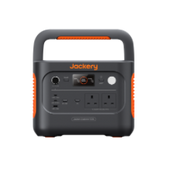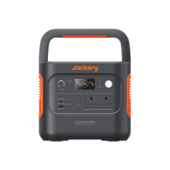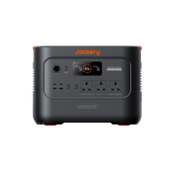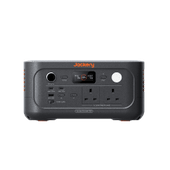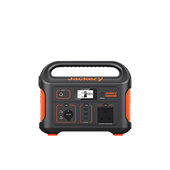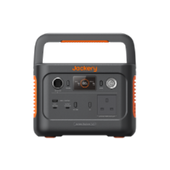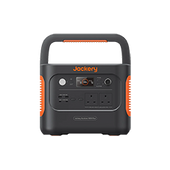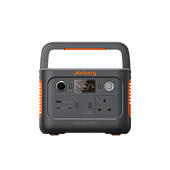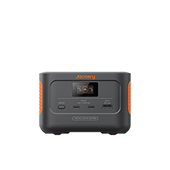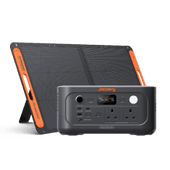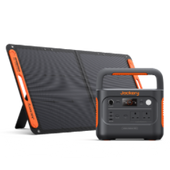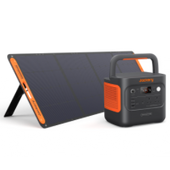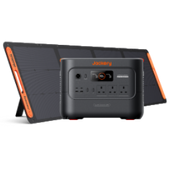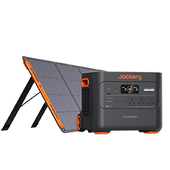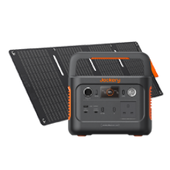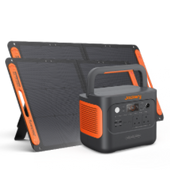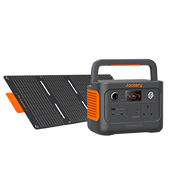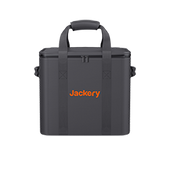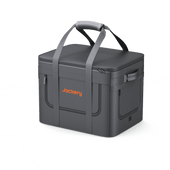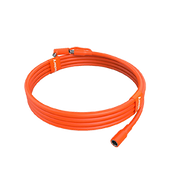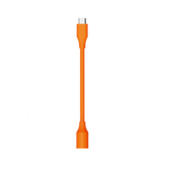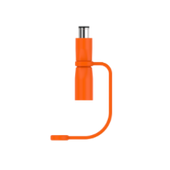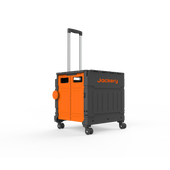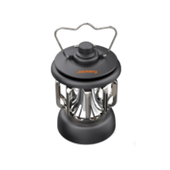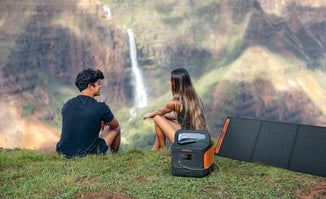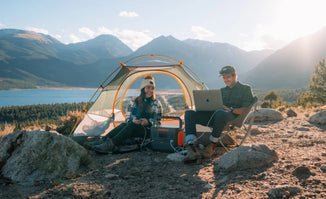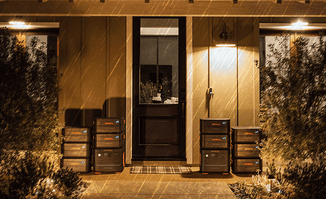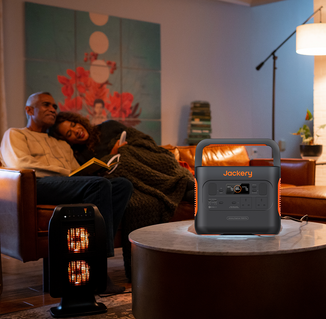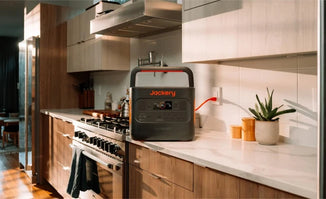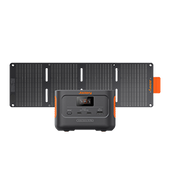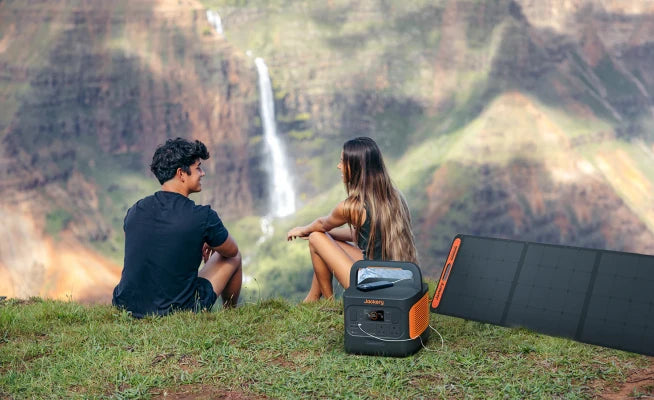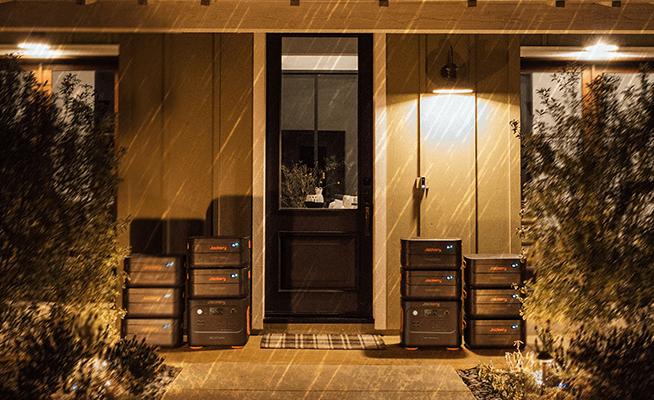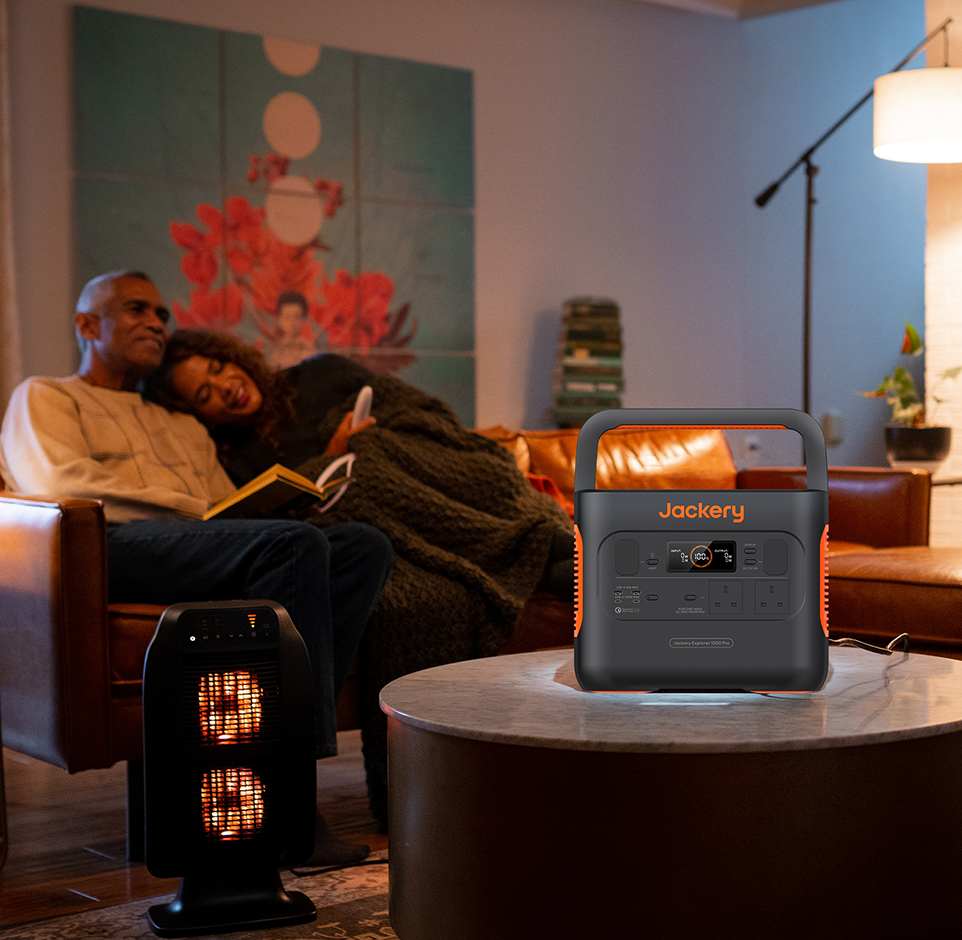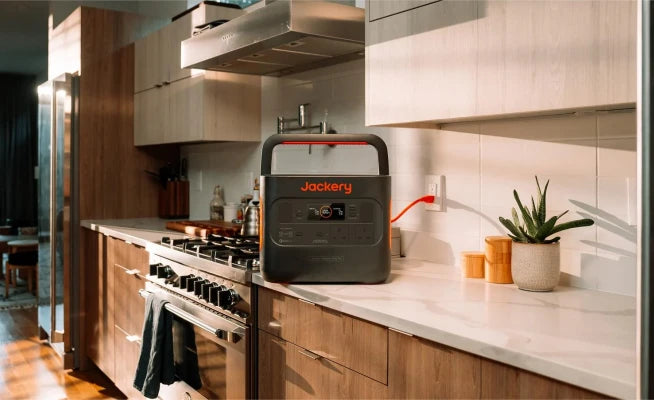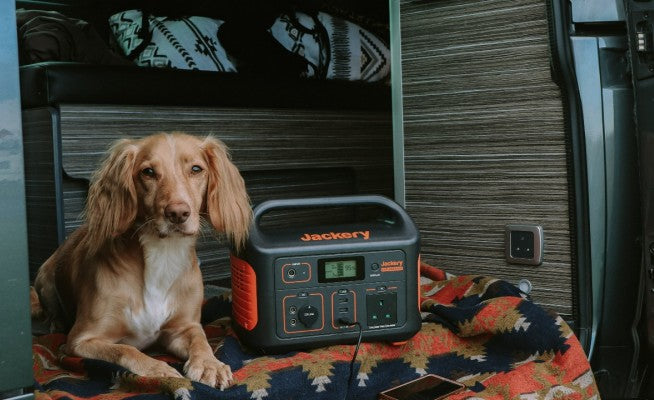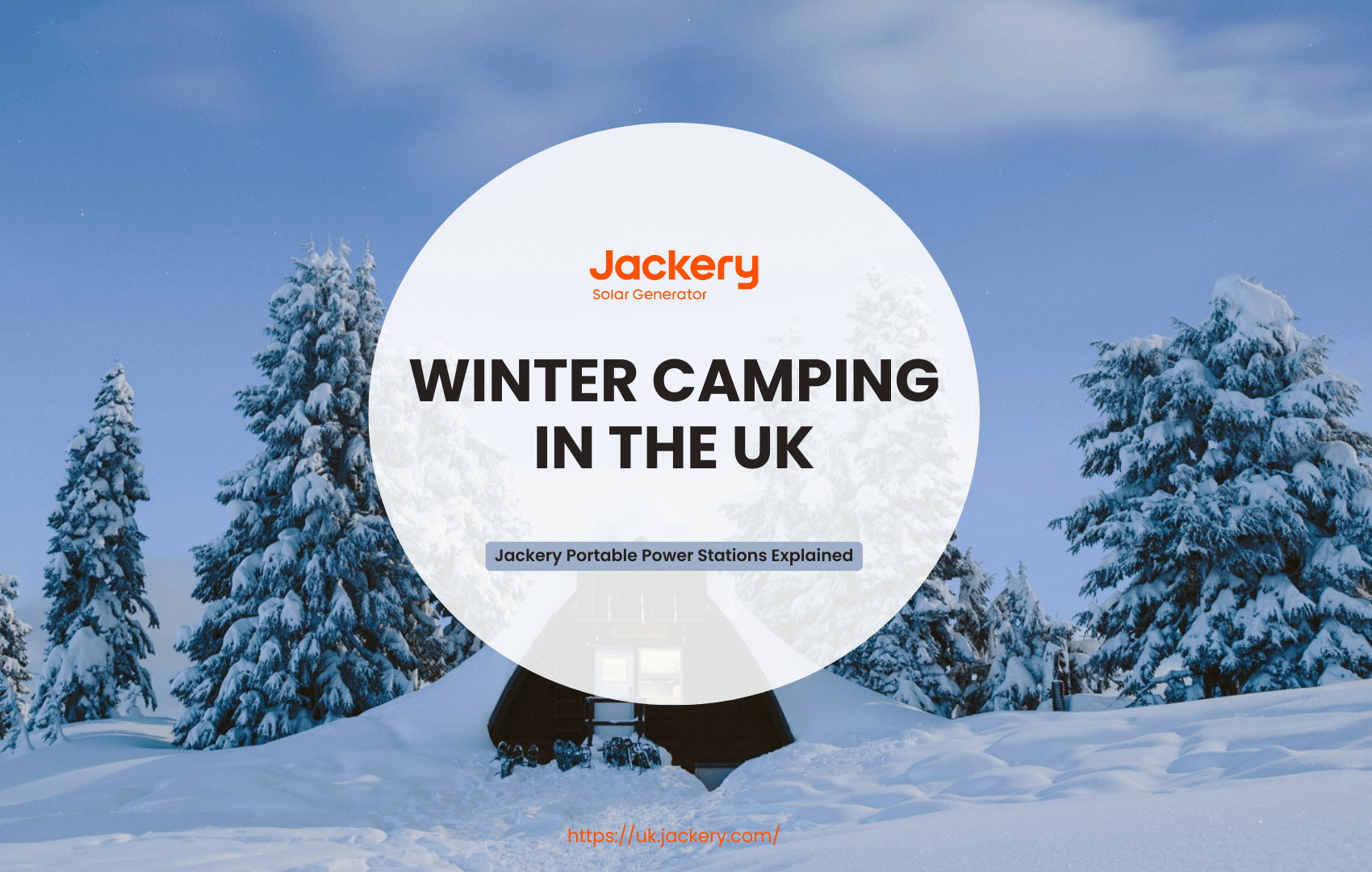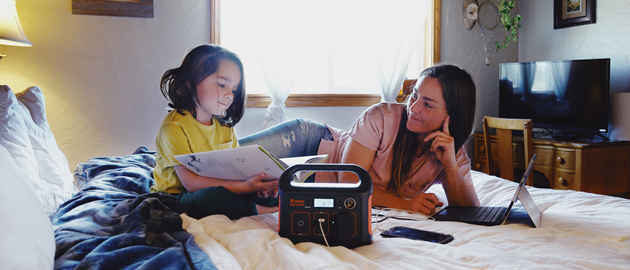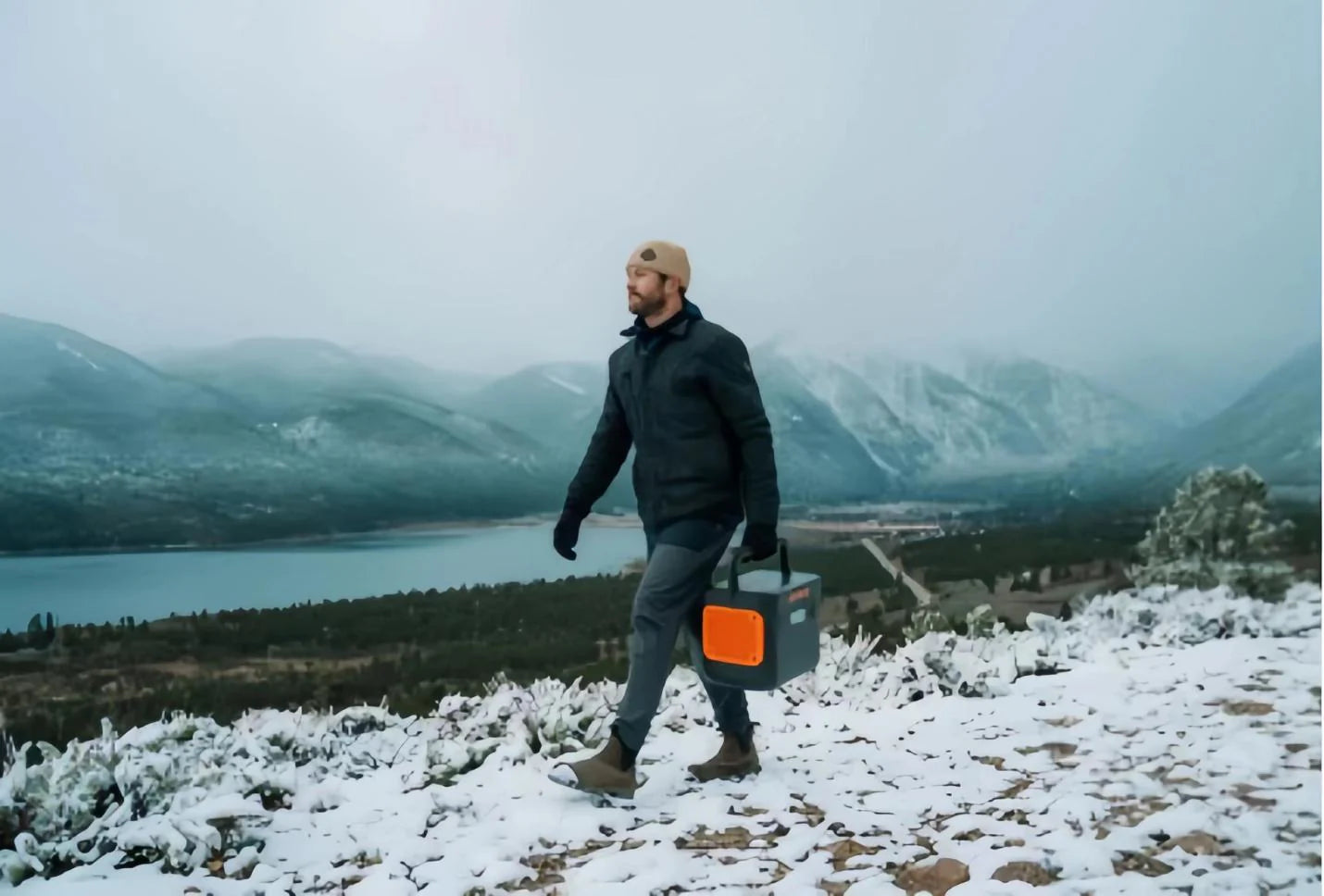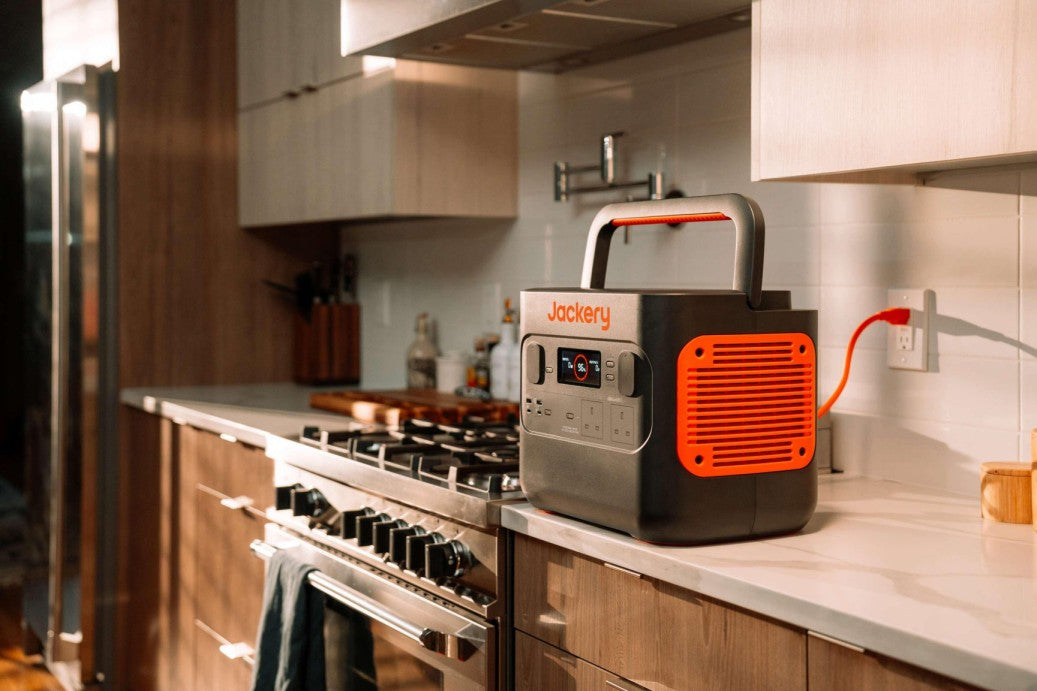|
Key Takeaways: |
|
- Winter camping in the UK is feasible, but campers must be fully prepared and planned. - In winter, the number of open campsites in the UK will be relatively reduced. - Knowing basic first aid knowledge and skills can help self-rescue and mutual rescue in emergencies at winter campsites. - Mastering the layered dressing method is a warm-keeping skill for every camping enthusiast. - We recommend Jackery Explorer 2000 Plus or 1000 Plus portable power station to charge your essentials effectively. |
Is It Possible to Camp in the UK During Winter?
Camping in winter is feasible in the UK, but you must be fully prepared. For example, by choosing the right campsite and equipment and paying attention to safety issues, you can enjoy an unforgettable winter camping experience in the UK. The following section will analyse the feasibility of winter camping in the UK in terms of three aspects: weather conditions, campsite opening, and safety.
Weather Conditions
In winter, the UK climate is cold and rainy; some areas may experience frost and snow. This wet and cold climate makes camping relatively poor, and the cold and damp are prone to causing health problems such as colds and hypothermia.
In addition, strong winds and continuous rainfall may make it difficult to set up and keep the tent dry, increasing the difficulty and discomfort of camping. However, winter camping is still feasible if campers are fully prepared for cold and waterproofing and choose a relatively reasonable weather period.
Campsite Opening
In the UK, many campsites adjust their opening hours according to seasonal changes. In winter, the number of open campsites is relatively reduced. Some campsites may be closed or restricted and only provide the most basic facilities. Therefore, before camping activities, understand the campsite opening rules in advance.
Safety
Weather phenomena such as low visibility, icy roads and strong winds increase the safety risks of winter camping in the UK. Therefore, campers should prioritise sites with complete facilities and standardised management when choosing campsites to ensure timely assistance in emergencies. In addition, campers need to master the necessary safety knowledge and skills, such as how to deal with sudden weather changes.
In summary, winter camping in the UK is feasible, but campers must be fully prepared and planned. Therefore, choosing the correct weather period, understanding the campsite opening conditions in advance and ensuring one's safety are the keys to successful winter camping.
Winter Camping Locations in the UK
With the arrival of winter, many people think the camping season is over. However, some great camping sites in the UK offer unique experiences and beautiful scenery even in the cold season. Here are some winter camping sites in the UK worth trying so you can feel the warmth and romance in the snow.
Blackberry Wood
Location: Streat Ln, Ditchling, Hassocks BN6 8RS United Kingdom
Contact: 01273 890 035
Web: Blackberry Wood
Facilities: Free parking, Kids' outdoor play equipment, Convenience store, Outdoor fireplace, Picnic area
Rate: From £10
Located in the heart of East Sussex, Blackberry Wood is a small, friendly, family-run camping site. Blackberry Wood is divided into two parts. The first part offers a variety of quirky accommodation facilities, including two amazing hand-made tree houses named Higgledy and Piggledy. Other types of accommodation include traditional gypsy caravans, red buses, helicopters, cozy cabins, curve cabins and airstream trailers. The second section is a woodland area known as the Wild Side.
If you love nature, want to explore the outdoors, and enjoy campfires and long walks, come to Blackberry Wood to experience it.
Kingsmead Centre
Location: Forches Corner, Clayhidon EX15 3TR England
Contact: 01823421630
Web: Kingsmead Centre
Facilities: Free parking, Paid wifi, Pets Allowed ( Dog / Pet Friendly ), BBQ facilities, Outdoor fireplace, Self-serve laundry, Picnic area, Shops, First aid kit, Washing machine
Rate: From £19
Located in the Blackdown Hills, Kingsmead Centre is a camping site with something for almost everyone. The area offers many walks, making it an excellent place for hiking enthusiasts. In addition, Dunster Castle is just a short drive away, making it a wonderful place for history lovers.
This well-maintained site is in the middle of a forest and has parking for various tents, caravans, and motorhomes. Yurts, lotus tents, and bell tents are also available for hire.
Whitlingham Broad Campsite
Location: Whitlingham Broad Campsite Whitlingham Lane, Trowse Newton NR14 8TR England
Contact: +44 7794 401591
Web: Whitlingham Broad Campsite
Facilities: Free parking, Kids' outdoor play equipment, Pets Allowed ( Dog / Pet Friendly ), Picnic area, Shared bathroom
Rate: From £13.5
Whitlingham Broad has traditional camping and a range of outdoor activities, but it also has a quirky rural feel due to its proximity to the historic county seat of Norwich. Set in 80 acres of country parkland, it is a gateway to the Broads and a great base to escape the city. The campsite is entirely grassland, but the country park landscape includes a river, a water meadow with wildflowers, and a wild-infested forest with old and young trees.
Bargoed Farm
Location: Llwyncelyn, Aberaeron, Llwyncelyn SA46 0HL Wales
Contact: +44 1545 580947
Web: Bargoed Farm
Facilities: Free parking, Hot tub, Bar/Lounge, Restaurant, Pets Allowed ( Dog / Pet Friendly ), Shops, Self-serve laundry
Rate: From £30
Bargoed Farm is located in the heart of Cardigan Bay on the west coast of Wales, between the picturesque seaside towns of Aberystwyth and Newquay. With easy access to the main road for all vehicles, the farm is peaceful and private, a haven for all wildlife.
In addition, a quiet lane off the main road leads from the site to the local village of Llwyncelyn, from where it is a short walk to the beautiful Wales Coast Path. A farm shop and bistro on site, The Moody Cow, serves a range of delicious homemade produce throughout the day.
The Complete Winter Camping Essentials List
Winter camping in the UK can be a real challenge to nature. Being well prepared to cope with the cold and unpredictable weather is essential. The following detailed equipment list will help create a safe and comfortable camping trip. However, please adjust the equipment according to the specific camping location and weather conditions to ensure everything goes well.

A. Sleeping Equipment
Sleeping equipment is essential for camping in the UK during the winter, as it is directly related to the comfort and health of the camper. For example, a moisture-proof mat is indispensable. It insulates and provides comfortable support to prevent the cold air from invading the ground. Here are some sleeping equipment for winter camping in the UK:
• Tent
• Sleeping bag
• Moisture-proof mat
• Blanket/insulation blanket
• Hot water bottle or heating pad
B. Kitchen Utensils
The proper kitchen utensils can provide a stable cooking experience and ensure safe and hygienic food. The food choice should focus on calories and nutrition, and a balanced combination of carbohydrates, proteins and fats is essential. Here are some kitchen utensils for winter camping in the UK:
• Kerosene stove/wood stove/gas stove
• BBQ grill
• Cooking set (including pots, bowls, ladles, basins, etc.)
• Insulated box
• Camping kettle
• Cooking seasoning
• Ingredients (fresh fruits and vegetables, flour, etc.)
• High-calorie snacks (chocolate, beef jerky)
C. Tools and Convenience Equipment
The selection and preparation of tools are indispensable parts of winter camping and are directly related to camping safety. For example, a tool hammer can quickly drive in and out of the tent's ground spikes. Spare ground spikes can provide backup when the original ones are damaged or lost. Here are some tools and convenient equipment for winter camping in the UK:
• Camp cart
• Tool hammer
• Spare ground spikes
• Multi-function knife
D. Emergency Equipment
Cold weather and changing environments increase the risks of winter camping. Emergency supplies provide safety for campers and are essential tools for dealing with emergencies. Here are some emergency gear for winter camping in the UK:
• First aid kit (Band-Aids, disinfectant, cold medicine, painkillers, etc.)
• Mosquito repellent spray
• Survival whistle
• Firestick
• Map and compass
• Portable power station
• Camp light
• Flashlight/headlamp
With a portable power station (PPS), you can keep your home's electricity running even when the power goes out. But many people don't know how useful portable power sources are for winter camping in the UK. With a PPS, you can have a better time camping and even have safer outings in the wild.

Here, we introduce Jackery Portable Power Station, the portable power supply for charging your essential camping equipment, such as the electric stove, portable grill, communication devices, GPS, and more in wild camping. Learn more about it in the following part.
E. Personal Items
Please prepare enough clothes to change if your clothes get wet or dirty during camping. In addition, maintaining personal hygiene is something that cannot be ignored during camping.
Here are some personal items for winter camping in the UK:
• Warm underwear
• Down jacket and windproof jacket
• Waterproof pants
• Hiking shoes
• Hat
• Gloves
• Thick socks
• Toiletries (toothbrush, toothpaste, towel, wet wipes, etc.)
• Sunscreen
|
Winter Camping Essentials Checklist |
|
|
Sleeping Equipment |
• Tent • Sleeping bag • Moisture-proof mat • Blanket/insulation blanket • Hot water bottle or heating pad |
|
Kitchen Utensils |
• Kerosene stove/wood stove/gas stove • BBQ grill • Cooking set • Insulated box • Camping kettle • Cooking seasoning • Ingredients • High-calorie snacks |
|
Tools and Convenience Equipment |
• Camp cart • Tool hammer • Spare ground spikes • Multi-function knife |
|
Emergency Equipment |
• First aid kit • Mosquito repellent spray • Survival whistle • Firestick • Map and compass • Portable power station • Camp light • Flashlight/headlamp |
|
Personal Items |
• Warm underwear • Down jacket and windproof jacket • Waterproof pants • Hiking shoes • Hat • Gloves • Thick socks • Toiletries • Sunscreen |
Jackery Portable Power Stations Explained
Charging hand warmers, electric blankets, or compact heating devices can significantly enhance comfort and safety with a portable power station in cold environments.
Also, maintaining the charge of essential equipment such as phones, GPS, and communication tools is imperative for navigation and emergency scenarios. In contrast to conventional gas generators, portable power stations function silently, reducing disturbances at the campsite when winter camping in the UK.

A Jackery Portable Power Station is a small, battery-powered gadget that lets you get power on the go. It has AC, DC, and USB ports to run most home and outdoor appliances and smartphones. It's quieter than gas engines, doesn't emit pollution, and can be charged by solar panels, wall outlets, or car chargers.
Jackery Explorer 1000 Plus
The Explorer 1000 Plus features an impressive 1264Wh durable LiFePO4 battery and a 2000W full-power pure sine wave inverter, supplying sufficient energy for almost all essential devices. Remarkably, it can augment its capacity to 5kWh by incorporating up to three more battery packs.
The MPPT technique guarantees 99% efficiency in solar charging. A wall charge from 0% to 100% of the battery requires 100 minutes, whereas solar charging with four SolarSaga 200W solar panels necessitates 2 hours. With car charging capabilities, concerns over power disruptions will be alleviated.
In about 60 seconds, one may seamlessly connect solar panels to the power station, a procedure significantly more straightforward and user-friendly than traditional generators. Furthermore, it features a pass-through charging capability, allowing for device use while concurrently recharging via solar energy. If there is no sunlight in winter, you can use your wall outlets or carports to recharge the 1000 Plus quickly.
Monitor the power station's status effortlessly from your mobile devices using the Jackery APP. The app encompasses the remaining battery level, duration, output/input, and many metrics. Experience serene charging with the Quiet Charging Mode, which maintains operational noise levels at or below 30dB, ensuring complete tranquillity.

The following are the working hours of using Jackery Explorer 1000 Plus (1.26-5 kWh) to charge camping appliances:
|
Camping Appliances |
Working Hours |
|
Kettle (750W) |
1.3-5.7H |
|
Camping Lights (50W) |
20.2-85H |
|
Electric Stove (800W) |
1.3-5.3H |
|
Portable Heater (300W) |
3.4-14.2H |
|
Electric Blanket (150W) |
6.7-28.3H |
Jackery Explorer 2000 Plus
Jackery Explorer 2000 Plus is more powerful and versatile than 1000 Plus. It is a solid portable power solution that delivers outstanding performance for outdoor activities and home backup, especially for winter camping in the UK. With its impressive capacity and powerful output, this device can support the operation of essential appliances for weeks, even certain large appliances.
The Jackery Explorer 2000 Plus enables the addition of extra battery packs, increasing the capacity from 2 kWh to an impressive 12 kWh, thereby significantly satisfying your power needs. This power station has a remarkable output of 3000W, almost all essential appliances indoors or outdoors.
The Explorer 2000 Plus stands out as a groundbreaking add-on battery pack that offers the convenience of recharging through solar panels, wall outlets or carports. This feature increases versatility, boosts charging efficiency, and shortens charging time.
ChargeShield is Jackery's advanced fast charge technology, featuring 62 protective mechanisms, 12 protective algorithms, and four types of physical safety protection. This technology uses a unique stepped variable-speed charging algorithm to enhance safety and extend battery pack lifespan by 50%.

The following are the working hours of using Jackery Explorer 2000 Plus (2-12 kWh) to charge camping appliances:
|
Camping Appliances |
Working Hours |
|
Kettle (750W) |
2.3-13.6H |
|
Camping Lights (50W) |
32.7-204H |
|
Electric Stove (800W) |
2-12.75H |
|
Portable Heater (300W) |
5.4-34H |
|
Electric Blanket (150W) |
10.9-68H |
How to Stay Warm While Camping in Winter?
Winter camping is undoubtedly a fierce challenge with the cold, but with the right equipment and clever and practical techniques, you can fully enjoy the unique beauty of nature in the cold season. Here are some detailed suggestions for keeping warm when camping in winter to ensure that you spend a warm and comfortable night outdoors.

Warm Camping Equipment
Warm equipment makes the winter camping experience more comfortable, prevents dangers such as hypothermia and frostbite, and protects campers' lives.
Tent: Choose a four-season tent with excellent windproof and waterproof performance. When setting up the tent, choose a sheltered and dry place.
Sleeping Bag: Try to choose a down sleeping bag suitable for winter. At the same time, select a sleeping bag with a comfortable temperature of 5-10 degrees lower than the lowest night temperature to ensure you can stay warm even in extreme weather.
Moisture-Proof Pad: Please use a moisture-proof pad with a high R-value. It is best to choose a double-layer combination of an inflatable pad and a non-inflatable pad, which can effectively isolate moisture and cold from the ground.
Dress in Layers
Mastering the art of dressing in layers is a must-have skill for every camper to stay comfortable and safe in extreme weather. Layering keeps you warm and allows you to add or remove clothing as your body temperature changes, preventing you from overheating or overcooling.
Base Layer: Wear quick-drying clothing made of wool or synthetic fibres as your base layer. These materials can quickly wick away sweat, keep your body dry, and prevent the evaporation of sweat from taking away heat.
Middle Layer: Wear down or fleece clothing as a warm layer. These materials have good thermal insulation and can effectively prevent heat loss.
Outer Layer: Waterproof, breathable hardshell jackets and pants can resist the invasion of cold wind, rain and snow while keeping the inner layer warm and dry.
Other Tips for Staying Warm
In addition to choosing warm camping equipment and mastering the art of dressing in layers, there are some tips for staying warm to consider.
Tip 1: Use a Survival Blanket
Place a survival blanket between your body and your sleeping bag on cold nights to increase warmth. However, be careful to prevent condensation from accumulating in the sleeping bag to prevent it from affecting warmth and comfort. An electric blanket is also an optimal choice for warming your body. If you worry about how to charge this blanket outdoors, we think the Jackery Portable Power Station can handle this easily.
Tip 2: Don't Wear Wet Clothes
If your clothes are wet, change into dry clothes immediately to avoid a rapid drop in body temperature.
Tip 3: Eat High-Calorie Foods
To help the body generate heat, eat high-calorie snacks before going to bed, such as jerky, dried fruits, and ginger.
Tip 4: Warm up Before Going to Bed
To increase body heat, do light activities before bed, such as skipping rope or doing push-ups.
Tip 5: Use a Portable Tent Heater
Use a portable tent heater or a tent wood stove, but be sure to ensure safety, choose a heating device suitable for the tent, and strictly follow the instructions. Like the electric blanket, the Jackery Portable Power Station can help you charge it without noise or pollutants in your tent.
Safety Tips for Winter Camping in the UK
With the arrival of winter, many camping enthusiasts are eager to experience the unique natural beauty of the UK's cold climate. However, winter camping requires adequate preparation and exceptional attention to safety issues. Here are some key winter camping safety tips to help you stay safe while enjoying the outdoors.

Safety Tip 1: Choose The Right Campsite
When choosing a campsite, be sure to choose a good location that is sheltered from the wind, close to water sources, and away from cliffs and high-voltage wires.
Safety Tip 2: Pay Attention to Weather Changes
Before setting off, carefully check the local weather forecast, especially for mountainous areas and areas where blizzards often occur.
Safety Tip 3: Notice the Fire Safety
When using a campfire, be sure to carry it out in a safe area and closely monitor the fire source at all times. Before leaving the camp or going to bed, be sure to completely extinguish the campfire to ensure that there are no embers left to prevent fire.
Safety Tip 4: Prevent Hypothermia
When camping in winter, always keep your clothes dry, especially when you are in snow activities. Once your clothes are soaked by snow and water, they should be changed immediately to avoid hypothermia. In addition, drink hot drinks and eat hot foods frequently, such as hot chocolate, ginger tea, and stomach-warming soups, to maintain body temperature.
Safety Tip 5: Prepare a Backup Plan
Before departure, make a detailed backup plan, including emergency contact information and backup routes. At the same time, familiarise yourself with local rescue resources and services to get help in an emergency.
Safety Tip 6: Adequate First Aid Preparation
Many situations are beyond your control in the wild, and a complete first aid kit can provide valuable help at critical moments. In addition, it is recommended that you participate in some first-aid training courses to master basic first-aid knowledge and skills to save yourself and each other in an emergency.
Winter Camping in the UK FAQs
The following are the frequently asked questions about winter camping in the UK:
1. Is camping a good idea in winter?
Winter camping is becoming a popular outdoor activity in the UK, and despite the low temperatures and harsh conditions, this unique experience has many advantages that cannot be ignored.
From exercising to enjoying unique recreational activities to experiencing the beauty of nature and affordability, winter camping in the UK is undoubtedly an attractive outdoor activity.
2. What temperature is too cold for camping in the UK?
Camping is usually too cold in the UK when temperatures are below 0℃. The average temperature in the UK in winter is 2-3 degrees, and the coldest may reach several degrees below zero, which is already quite cold for camping. Especially in humid conditions, the perceived temperature will be lower, increasing the discomfort of cold. Therefore, it may be considered too cold for camping when the temperature is close to or below 0℃, accompanied by strong winds, rain or snow.
3. How to stay dry when camping in the UK in winter?
Staying dry during winter camping can better keep you warm. Here are some tips for staying dry when camping in winter:
• You can use waterproof covers and dry plastic bags to wrap your sleeping bag to keep it dry. In addition, ventilate your sleeping bag regularly to avoid sweat accumulation.
• At night, you can use fire to dry clothes or put them in sleeping bags to dry them at body temperature. Shoes should be placed in sleeping bags to prevent freezing.
• Double-layer tents and moisture-proof mats are recommended to isolate underground moisture effectively.
Final Thoughts
As winter comes quietly, many friends who love camping cannot restrain their inner desire. Whether you're looking for adventure or a peaceful time in nature, winter camping offers a unique experience that'll leave you unforgettable. However, British winters are notoriously rainy and cold, making winter camping challenging. However, with proper arrangements and preparation, campers can still enjoy the unique natural beauty and camping experience during the British winter.

